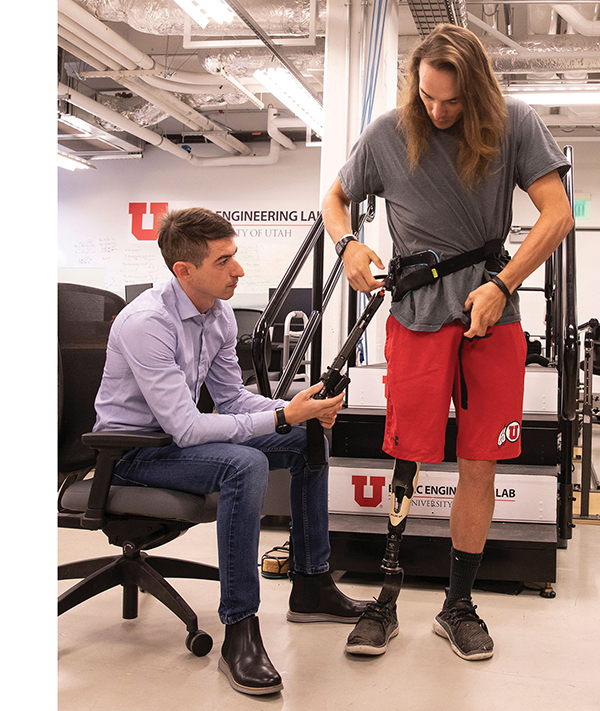Boom times are coming for powered exoskeletons. The consumer market for these “Iron Man lite” contraptions is projected to grow twentyfold over the next decade, fueled by demand from able-bodied users who want better strength and endurance.
This technology has obvious potential for amputees, and researchers at the University of Utah’s Bionic Engineering Lab are one step closer to unlocking it. In a paper published last fall in Nature Medicine, the Utah team documented how a motor-driven exoskeleton can improve mobility, reduce effort, and increase stamina for above-knee amputees. The authors conclude that “powered exoskeletons hold great potential for establishing a new standard of care for individuals with amputation.”
Designed by bioengineering whiz Tommaso Lenzi, the Utah device enabled test subjects to walk with 15 percent less effort, which is more or less equivalent to shedding a 25-pound ball and chain. “It just felt like a big wind was behind me, pushing me down the road,” beta-tester Stan Schaar told Utah Business. “I could probably walk for miles with this thing on, because it was helping my muscles move.”
Built mainly of carbon fiber and aluminum, the experimental device is surprisingly lightweight at just five and a half pounds. It wraps around the wearer’s waist and the residual thigh, enhancing the energy transfer from the hips and back to the prosthetic device. Onboard sensors and microcontrollers enable the exoskeleton to adapt itself to the wearer’s natural gait, creating a seamless integration between human and machine.
With the exoskeleton, Lenzi told Utah Business, an amputee’s metabolic burn rate “is almost indistinguishable from that of an able-bodied person. We’re very close to what an average person would expend at the same speed.”
Although it has only cleared first-level clinical trials, Lenzi hopes the powered exoskeleton may be commercially available in as soon as two years. And his device may not be the only one that’s ready by then: Ottobock made a serious investment in exoskeletons late last year when it acquired suitX, one of the industry’s leading manufacturers. Although suitX has generally focused on products for able-bodied industrial workers, you can bet Ottobock’s prosthetics division will benefit from some technology transfer.
For amputees like Schaar, it doesn’t matter who introduces the first exoskeleton for amputees. “There’s nothing that will ever replace a flesh-and-bone leg,” he says, “but this comes pretty close. I hope they get this thing on the market soon.”




